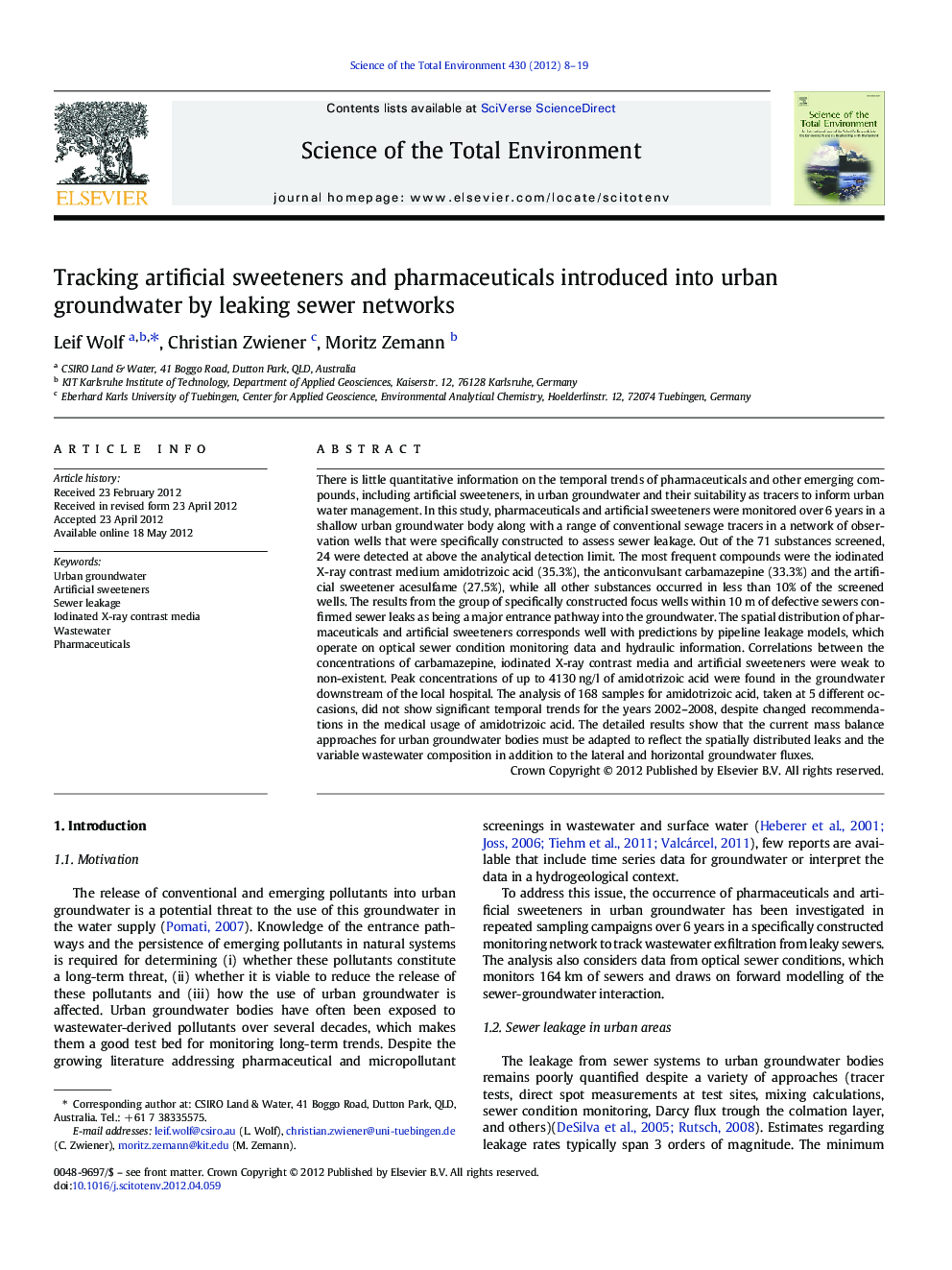| کد مقاله | کد نشریه | سال انتشار | مقاله انگلیسی | نسخه تمام متن |
|---|---|---|---|---|
| 4429336 | 1619822 | 2012 | 12 صفحه PDF | دانلود رایگان |

There is little quantitative information on the temporal trends of pharmaceuticals and other emerging compounds, including artificial sweeteners, in urban groundwater and their suitability as tracers to inform urban water management. In this study, pharmaceuticals and artificial sweeteners were monitored over 6 years in a shallow urban groundwater body along with a range of conventional sewage tracers in a network of observation wells that were specifically constructed to assess sewer leakage. Out of the 71 substances screened, 24 were detected at above the analytical detection limit. The most frequent compounds were the iodinated X-ray contrast medium amidotrizoic acid (35.3%), the anticonvulsant carbamazepine (33.3%) and the artificial sweetener acesulfame (27.5%), while all other substances occurred in less than 10% of the screened wells. The results from the group of specifically constructed focus wells within 10 m of defective sewers confirmed sewer leaks as being a major entrance pathway into the groundwater. The spatial distribution of pharmaceuticals and artificial sweeteners corresponds well with predictions by pipeline leakage models, which operate on optical sewer condition monitoring data and hydraulic information. Correlations between the concentrations of carbamazepine, iodinated X-ray contrast media and artificial sweeteners were weak to non-existent. Peak concentrations of up to 4130 ng/l of amidotrizoic acid were found in the groundwater downstream of the local hospital. The analysis of 168 samples for amidotrizoic acid, taken at 5 different occasions, did not show significant temporal trends for the years 2002–2008, despite changed recommendations in the medical usage of amidotrizoic acid. The detailed results show that the current mass balance approaches for urban groundwater bodies must be adapted to reflect the spatially distributed leaks and the variable wastewater composition in addition to the lateral and horizontal groundwater fluxes.
Figure optionsDownload as PowerPoint slideHighlights
► We compare pharmaceuticals and artificial sweeteners in urban groundwater.
► Acesulfame, amidotrizoic acid and carbamazepine occurred most frequently.
► Specifically constructed wells identify leaking sewer networks as a key source.
► Spatial distribution of trace organics fits with TV inspection of sewer condition.
► Artificial sweeteners did not occur more frequently than selected pharmaceuticals.
Journal: Science of The Total Environment - Volume 430, 15 July 2012, Pages 8–19